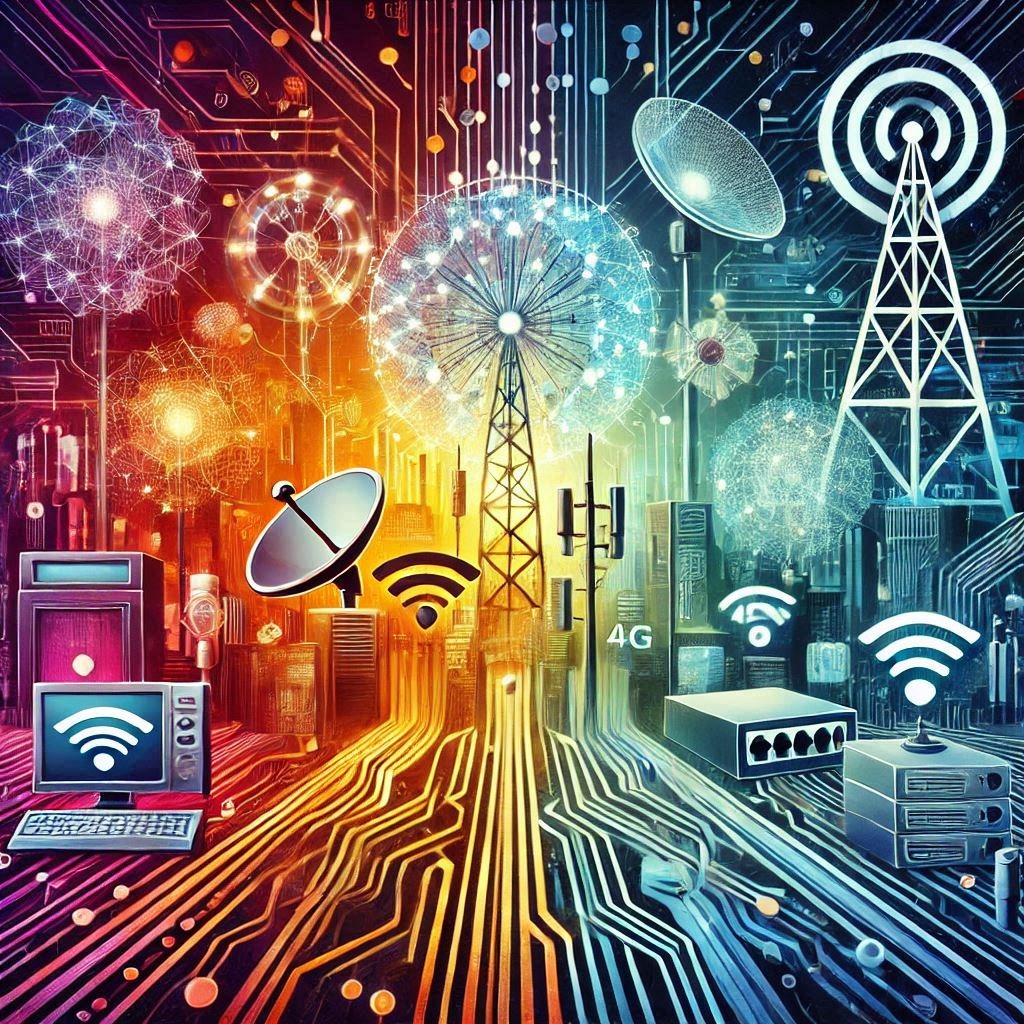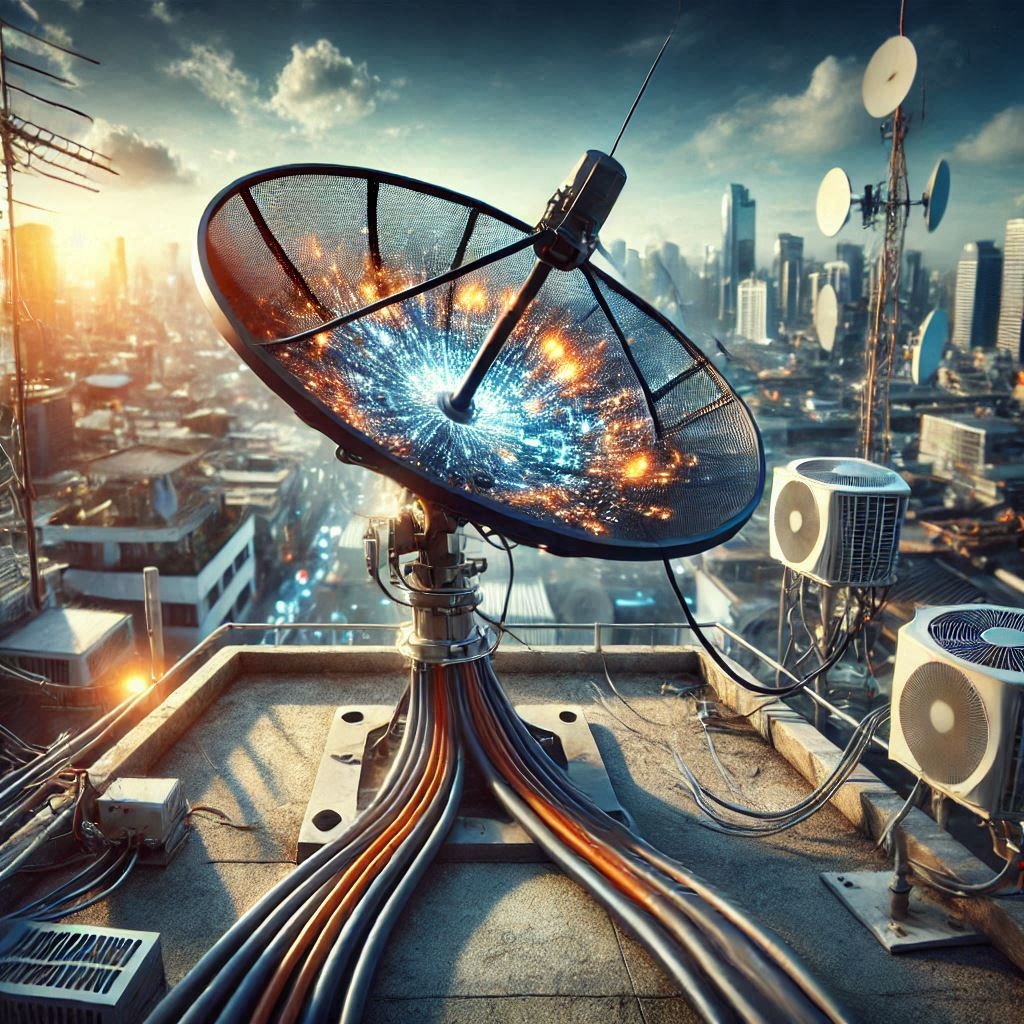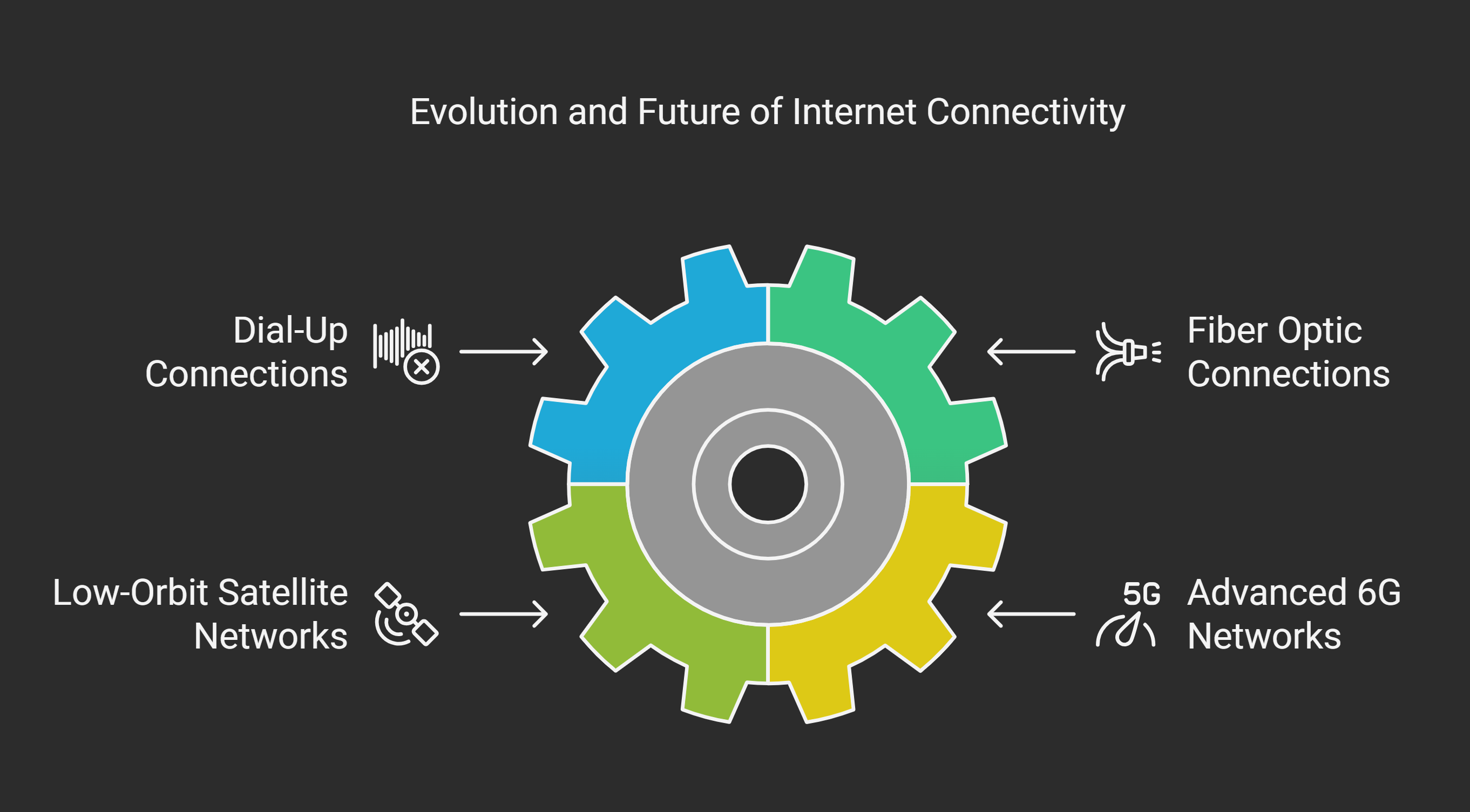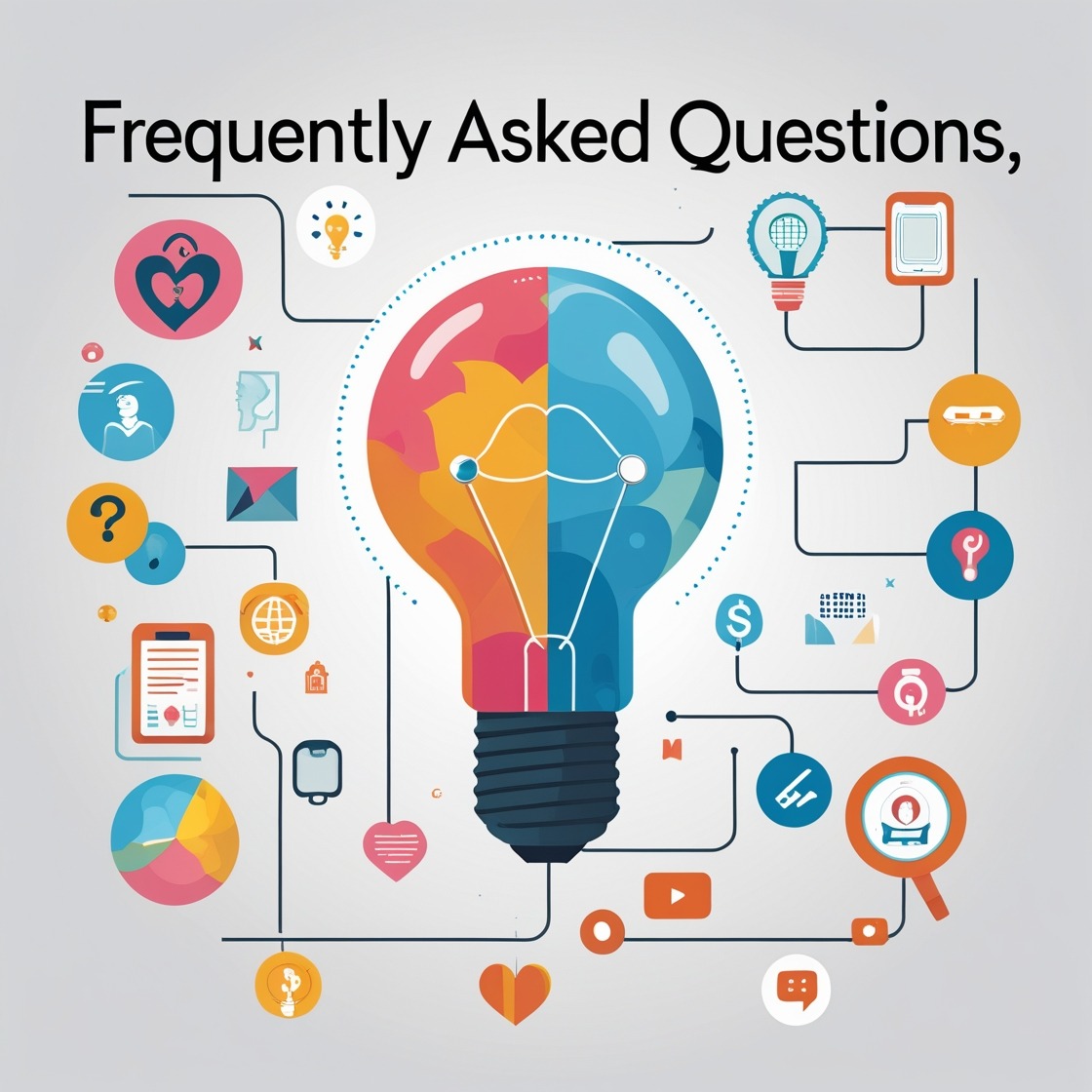
A Look at the Different Types of Internet Connections
The internet has revolutionized the way we live, work, and play. It's become an indispensable tool for communication, entertainment, education, and commerce. But have you ever stopped to think about how you actually connect to this vast network of information?
Understanding the different types of internet connections can help you make informed decisions about the best option for your needs and budget. Let's dive into the world of internet connectivity and explore the most common types available today.
1. Dial-Up Connection:
This blast from the past is a legacy technology that uses your existing telephone line to connect to the internet. Remember the screeching sound of the modem connecting? Dial-up is incredibly slow by today's standards and has largely been replaced by faster options. You can't use your phone line for calls while using the internet with a dial-up connection.
2. DSL (Digital Subscriber Line):
DSL (Digital Subscriber Line) cleverly transforms your regular telephone line into a high-speed internet highway by using frequencies that don't interfere with voice calls. Unlike the old dial-up days, you can chat on the phone while browsing the web. Modern DSL technology has come a long way, with speeds typically ranging from 10 Mbps to 100 Mbps, though some advanced versions like VDSL can reach up to 940 Mbps under ideal conditions.
However, your actual speed depends on factors like your distance from the provider's central office – the closer you are, the faster your connection will be. This "distance decay" effect is one of DSL's main limitations, but for many urban and suburban users, it remains a reliable and cost-effective option.
3. Cable Broadband:
One of the most popular types of internet connections, cable broadband harnesses the existing infrastructure of cable television networks. A cable modem links your computer to the internet using the same coaxial cables that bring your favorite TV programs to your screen. Cable internet offers impressive download speeds, sometimes reaching up to a gigabit per second. However, it can be affected by network congestion during peak hours, leading to slower speeds.
4. Fiber Optic Internet:
Considered the gold standard of internet connectivity, fiber optic internet transmits data using pulses of light through thin glass fibers. This technology offers blazing-fast speeds, often symmetrical, meaning upload and download speeds are the same. Fiber optic connections are highly reliable and less susceptible to interference compared to cable or DSL. However, the availability of fiber internet is still limited in some areas due to the cost of infrastructure development.

5. Satellite Internet:
For those in remote areas where cable or fiber optic connections aren't available, satellite internet provides a viable option. A satellite dish installed at your location receives signals from a satellite orbiting the Earth, providing internet access. Satellite internet typically has higher latency compared to other types, which can affect activities like online gaming or video conferencing.
6. Wireless (Wi-Fi):
While often used interchangeably with the internet, Wi-Fi is actually a technology that enables wireless internet access within a local area. A Wi-Fi router creates a wireless network that allows devices like laptops, smartphones, and tablets to connect to the internet without cables. Wi-Fi speed and range can vary depending on the router and surrounding environment.
7. Mobile Internet:
With the proliferation of smartphones, mobile internet has become increasingly popular. Cellular providers offer data plans that allow you to access the internet on your mobile device using cellular networks. Mobile internet speeds have evolved significantly with the advent of 3G, 4G, and now 5G technologies.
8. ISDN (Integrated Services Digital Network):
ISDN is a digital communication technology that utilizes existing telephone lines to transmit data, voice, and video content. Although ISDN offers faster speeds than dial-up, it's considered an older technology and has largely been superseded by broadband connections like DSL and cable.
Choosing the right internet connection involves considering factors like speed, cost, availability, and reliability. If you're a heavy internet user who streams videos, plays online games, or works from home, a high-speed connection like cable, fiber, or even 5G mobile internet would be ideal. For casual browsing and email, DSL or even satellite internet might suffice.
Understanding the different types of internet connections empowers you to select the best option that meets your needs and budget, ensuring you can stay connected to the digital world seamlessly.

Fun Facts and Future Trends:
Ever wondered how fast internet connections have evolved? In the early 1990s, dial-up connections crawled along at 56 Kbps – meaning it would take about 28 minutes to download a single song! Today's fiber optic connections can download the same song in a fraction of a second.
This dramatic improvement highlights how far we've come in internet connectivity. Looking ahead, emerging technologies like low-orbit satellite networks (like Starlink) and advanced 6G networks promise to push the boundaries even further, potentially bringing high-speed internet to every corner of the globe.
Making the Most of Your Connection:
No matter which type of internet connection you have, there are ways to optimize your experience. Simple steps like placing your Wi-Fi router in a central location, away from metal objects and other electronics, can significantly improve your signal strength.
For apartment dwellers dealing with multiple competing Wi-Fi networks, changing your router's channel settings can help reduce interference. And if you're experiencing slow speeds, try using a wired ethernet connection for bandwidth-heavy activities like gaming or video conferencing – you might be surprised at the difference it makes!
Combining Connection Types for Ultimate Reliability:
Many modern households are adopting a hybrid approach to internet connectivity. For example, you might have a primary fiber or cable connection for home use, supplemented by mobile hotspots for backup or travel. Some routers even support automatic failovers, switching to a cellular connection if your primary internet goes down.
This redundancy can be especially valuable for remote workers or anyone who needs constant, reliable internet access. The key is to understand your usage patterns and build a connectivity strategy that ensures you're never left offline when you need it most.

Frequently Asked Questions About Internet Connections
What is the most common internet connection?
Cable broadband is currently the most widely used internet connection type in most developed countries. Its popularity stems from the extensive existing cable TV infrastructure and its ability to deliver reliable high-speed internet to most urban and suburban areas.
How do you know if your internet is fiber or DSL?
Look at your modem and incoming line. DSL connects through a phone jack and typically uses a standard telephone cable (looks like a phone cord). Fiber connections use a distinctive fiber-optic cable (usually thinner and often with a green or blue jacket) and require a special Optical Network Terminal (ONT). You can also check your speed – if you're getting symmetrical speeds above 100 Mbps (same upload and download), it's likely fiber.
Is DSL or fiber better for internet?
Fiber is technically superior to DSL in almost every way. It offers faster speeds (often gigabit or higher), lower latency, more reliable service, and symmetrical upload/download speeds. However, DSL might be more practical in areas where fiber isn't available or for users who don't need extremely high speeds and prefer a more budget-friendly option.
What does a fiber optic line look like?
A fiber optic line is typically thinner than traditional copper cables and usually has a reinforced outer jacket that's often white, green, or blue. The actual fiber inside is incredibly thin – about the diameter of a human hair – and is made of glass or plastic that carries light signals. The cable often has additional protective layers and sometimes a metallic strength member.
What is considered a good internet connection?
For most households in 2024, a "good" internet connection provides at least 100 Mbps download speed and 20 Mbps upload speed. This supports multiple devices streaming HD video, gaming, and video conferencing simultaneously. However, what's "good" depends on your needs – remote workers, gamers, and large families might want 300+ Mbps for optimal performance.
Which internet connection type is more reliable?
Fiber optic connections are generally the most reliable because they're immune to electromagnetic interference, don't degrade over long distances, and aren't affected by weather conditions as much as other types. Cable and DSL can be quite reliable in good conditions, but they're more susceptible to environmental factors and network congestion.
Which is the most common wired connection to the internet?
Ethernet remains the most common wired connection method within homes and offices, typically using Cat5e or Cat6 cables to connect devices to routers. For the connection to the internet service provider, cable broadband is the most common wired option in most residential areas.
How to determine internet connection type?
Check your bill or service agreement, look at the physical cables and equipment (phone line for DSL, coaxial for cable, fiber optic cable for fiber), or run a speed test. The type of modem/router you have can also indicate your connection type. Many ISPs' equipment is labeled with the technology type.
What is the main drawback of DSL internet?
The primary drawback of DSL is its distance limitation – speed decreases significantly the further you are from the provider's central office. This "signal attenuation" means that customers more than a few miles from the central office may experience notably slower speeds. DSL also typically offers slower upload speeds compared to download speeds.
What is better, internet cable or fiber?
Fiber is technically superior to cable internet in several ways: it offers faster speeds (especially upload speeds), lower latency, better reliability, and isn't affected by peak usage times like cable can be. However, cable internet is more widely available and often more affordable. Cable can still provide excellent speeds for most users, typically offering downloads up to 1 Gbps in many areas.
Mike G.
IT Certification Jump
 Add Row
Add Row  Add
Add 



